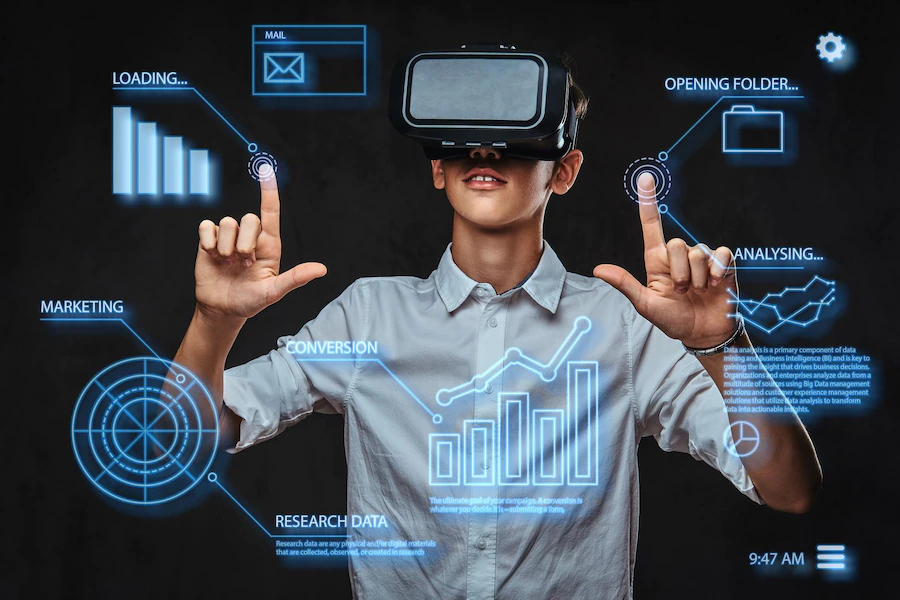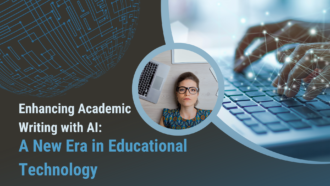What is the idea of human-centered artificial intelligence all about?
Introduction
Artificial intelligence has been at the center of attention in various spheres like academics and industry. Artificial intelligence has been the prime technology that has allowed machines to develop a human-like cognitive mechanism. It is with the help of artificial intelligence that state-of-the-art technologies have reached their pinnacle and their final stage of development. Credit goes to machine learning techniques that have operated as the application wing of artificial intelligence in a number of ways.
With the help of AI and machine learning courses, it has become possible to train the workforce in different automation technologies. Such courses have given a new lease of life to the human resource department and made artificial intelligence much more human-oriented. In this article, we understand the idea of human-centred artificial intelligence in much more detail.
The idea of human-centered artificial intelligence
The idea of human-centered artificial intelligence is related to the success of machine learning in transforming various technologies. With the help of machine learning, automation has reached its cusp. It has become possible for the machines to function autonomously on their own and execute specific tasks. It is in this context that an ethical debate has taken shape which questions the power of machines to take over human functions.
The accuracy, efficiency, and efficacy that are achieved with the help of machine intelligence have put a large number of human efforts in the background. If successful efforts are not made at the earliest to curb the advent of machine intelligence dominating human intelligence, this might give rise to a potential conflict between the former and the latter. It is in this context that the idea of human-centered artificial intelligence is being considered by researchers.
When we speak of human-centered artificial intelligence, we are looking at the resolution of the potential conflict between man and machine. We are also looking at the prospects of making artificial intelligence to be much more humane in nature. This means that the technology of artificial intelligence should be used for the benefit of the people. It should be driven by the choices and needs of the people. In addition to this, different decisions and outcomes related to human resources should be supplemented by machine intelligence.
In other words, the main function of machine learning and artificial intelligence should be the resolution of challenges that are faced by the human race in the present time. It needs to be noted at this point in time that artificial intelligence should not suppress the creativity of humans but should provide sufficient alternatives for innovation and development in various fields.
Human resources and human-centered AI
The benefits of artificial intelligence in the domain of human resources are numerous. For instance, AI-based toolkits can be created for various aspects of organizational processes. A common management platform can be provided by artificial intelligence to the human resource department in which they can periodically check the performance of different domains. One of the most common human-centered artificial intelligence models for human resources revolves around six stages.
- The first stage is the identification of talent in various disciplines. For this, it is important to come up with an appropriate job description and run appropriate advertisement campaigns so that diverse talent can be attracted. At this stage, we collect different job profiles related to a particular listing.
- The next stage in the process is to acquire the appropriate profile by selecting from the database that we have formed at the first stage. It is at the second stage that the process of screening and assessment is conducted in detail. Artificial intelligence provides an effective toolkit that helps in screening thousands of applications and matching the appropriate candidate for the job profile that we intend to fill up. Consequently, we can proceed with the process of interview and the on-boarding process to bring the candidate under the legitimate gamut of the organization.
- The third stage is called the deployment stage. It is at the deployment stage that performance assessment is conducted and benefits and compensation are briefed to the candidate. With the help of artificial intelligence, we can also come up with an appropriate figure of compensation based on the overall experience of the candidate.
- The fourth stage is the training stage. It is at the training stage that coaching and mentoring is done along with career development. An artificial intelligence toolkit is very important at this stage because it provides an online platform for training and mentoring of the professional including his reskilling process.
- The fifth stage involves the retention of talent. With the help of an AI-based toolkit, we keep the candidate engaged in the organization for a long time. Appropriate data of the candidate is fed into the AI based platform and alerts related to recognition and promotion are generated that are forwarded to the Human Resource Department.
- The sixth stage is the contingency stage of the human resource life cycle. Among a lot of things, it involves the prediction of turnover of the company in addition to workforce planning. It also involves monitoring of the performance of various departments as well as maintaining constant integration and communication between them.
Other dimensions of human-centered artificial intelligence
There are various other dimensions of human-centered artificial intelligence. We highlight some of them briefly.
- The first important dimension of human-centered artificial intelligence is the capability of machines to display elements of empathy and sympathy. In simple terms, this also relates to the ability of the machines to display elements of emotional intelligence or social intelligence.
- The ability of machines to communicate with humans in a sensitive way is also one of the important dimensions of human-centered artificial intelligence.
- In addition to this, another dimension of human-centered artificial intelligence includes the appropriate modifications of actions of machines based on the feedback of humans. Once machines are successfully able to incorporate the feedback of humans in their functions as well as in their neural schema, it is highly likely that artificial intelligence would move to become more trustworthy and humanizing in nature.
- Another important dimension of artificial intelligence that is being talked about is called responsible AI. Responsible AI is all about guaranteeing a certain amount of responsibility when machines make specific decisions. This means that decisions should be well explained and should be grounded on quantitative facts.
- Needless to mention, artificial intelligence maintains a lot of consistency in its decisions irrespective of the situations it is subjected to. There should be no cognitive bias or favoritism in the decisions that are administered with the help of artificial intelligence technology.
The way ahead
It is extremely important to develop a guide that contains documentation processes related to artificial intelligence. This guide should highlight various policies, programs, and principles of artificial intelligence in detail. This white paper should also contain a detailed description of the role of artificial intelligence in the human resource domain.
It should comment on the capability of artificial intelligence to supplement and augment the role of human resources. It should also resolve the controversy and the argument that opines the replacement of the workforce by machine. In one word, it should act as a road map for harnessing the power of artificial intelligence in the training and development of human resources in the long run.

















